In the ever-evolving landscape of modern agriculture, efficient and streamlined operations are key to the success of any chicken farm. The poultry industry demands precision, productivity, and sustainable practices to meet the growing global demand for poultry products. To achieve optimal results, chicken farm operators must employ strategies that maximize efficiency across various operations.
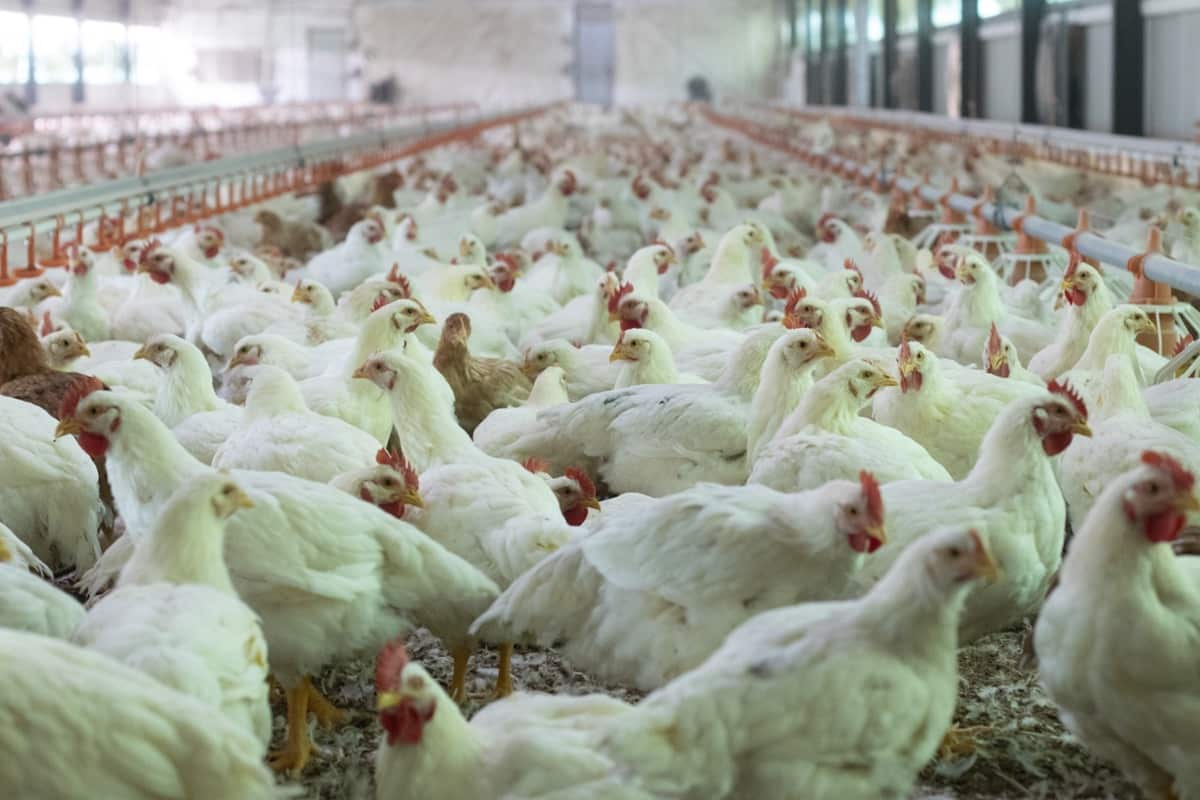
From flock management and feed utilization to biosecurity measures and waste management, every facet of the farm plays a crucial role. This blog will explore practical tips and effective techniques to optimize chicken farm operations, ensuring increased productivity, reduced costs, and a thriving poultry business.
How to Optimize Chicken Farm Operations
Start by Choosing the Best Chicken Breeds
- Determine the purpose of your poultry business (meat production or egg production) and select the appropriate breed.
- Consult with experts or experienced farmers to make an informed decision.
- Source your chicks from reputable hatcheries and ensure they are properly vaccinated.
Optimize your Poultry Feed
- Feed optimization is crucial as it constitutes a significant production cost.
- Consider supplementing with alternative feeds like fodder or black soldier fly larvae.
- Invest in a quality feed formula tailored to the nutritional needs of your chickens.
Choose the Best Medication and Vaccination Schedules
- Organic medication can reduce costs and improve the overall health of your birds.
- Herbal remedies and spices can help combat poultry diseases and boost immune systems.
- Seek guidance from a coach or expert in organic medication production and administration.
Build Strong Structures for Housing
- Invest in high-quality materials and construct sturdy poultry housing.
- Proper construction ensures longevity and minimizes repair costs.
- Pay attention to details when implementing the deep litter or battery cage system.
Get Durable Equipment for Farm Work
- Purchase reliable equipment such as feeders and drinkers that will withstand long-term use.
- Quality equipment prevents feed wastage and unnecessary replacements, saving costs in the long run.
- Consider locating your farm near rural areas where labor is more affordable.
- Train individuals to assist with poultry care to reduce labor costs.
- The cheaper the labor, the more you can increase your profit margin.
In case you missed it: Raising Kadaknath Chickens (Black Chicken) in India: Check How this Guide Helps Profitable Kadaknath Poultry Farming from Scratch
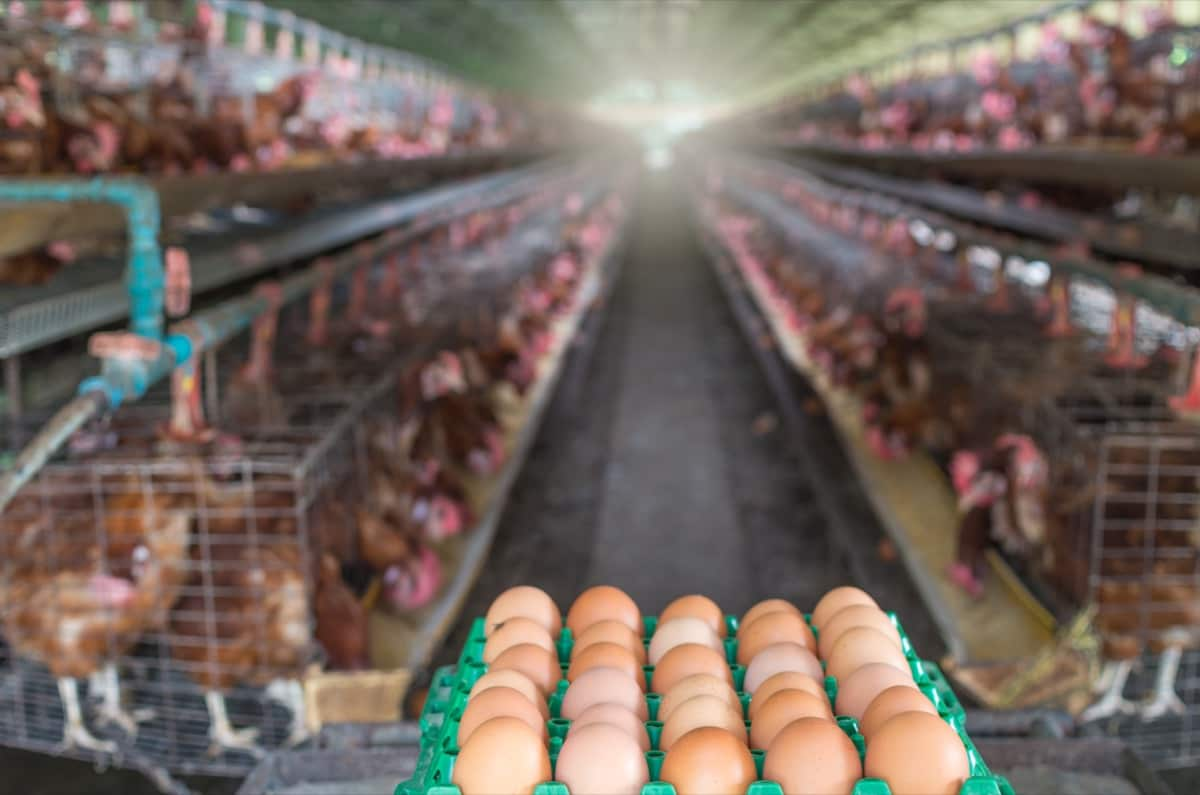
Sort your Chickens by Size for More Profits
- Separate chickens based on their weight to maximize profit during sales.
- Selling heavier birds at higher prices can increase overall revenue.
- Keep in mind that birds of the same age may gain weight differently.
Develop a Strategic Marketing Plan
- Conduct market research to understand demand and identify potential buyers.
- Plan your sales to avoid the unnecessary costs of keeping chickens for too long.
- Implement effective marketing strategies to ensure a steady stream of buyers for your poultry products.
Best Practices for Optimizing Feed Utilization in Chicken Farms
- Formulate balanced diets: Develop feed formulas that meet the specific nutritional requirements of chickens at different growth stages, taking into account protein, carbohydrates, fats, vitamins, and minerals.
- Use high-quality ingredients: Source feeds ingredients from reputable suppliers to ensure nutritional quality and minimize the risk of contamination.
- Consider alternative protein sources: Explore using alternative protein sources like soybean meal, fish meal, or insect protein to reduce reliance on expensive or environmentally unsustainable protein sources.
- Fine-tune feed particle size: Optimize the particle size of feed to enhance digestion and nutrient absorption and promote uniformity in feed consumption.
- Implement feed management strategies: Employ controlled feeding programs to minimize wastage and prevent overconsumption, such as restricted feeding or phase feeding based on age and production goals.
- Provide access to clean water: Ensure chickens have regular and frequent access to clean and fresh water to support proper digestion and nutrient utilization.
- Consider feed additives: Utilize feed additives, such as enzymes, prebiotics, probiotics, or organic acids, to enhance nutrient utilization, gut health, and overall performance.
- Monitor feed conversion ratio (FCR): Regularly measure FCR to assess feed utilization efficiency and identify improvement areas.
- Practice feed quality control: Implement proper storage and handling techniques to maintain feed freshness, prevent contamination, and avoid nutrient degradation.
- Reduce stressors: Minimize stress factors such as overcrowding, extreme temperatures, or disease outbreaks, as stress can negatively impact feed intake and utilization.
- Regularly assess flock health: Monitor the flock’s health status, promptly address any disease or parasite challenges, and provide appropriate veterinary care to ensure optimal feed utilization.
- Continuously educate and train staff: Train farm workers on best practices for feed management, handling, and record-keeping to maintain consistency and efficiency in feed utilization.
In case you missed it: How to Start Country Chicken Farming from Scratch in Andhra Pradesh: A Step-By-Step Guide for Beginners
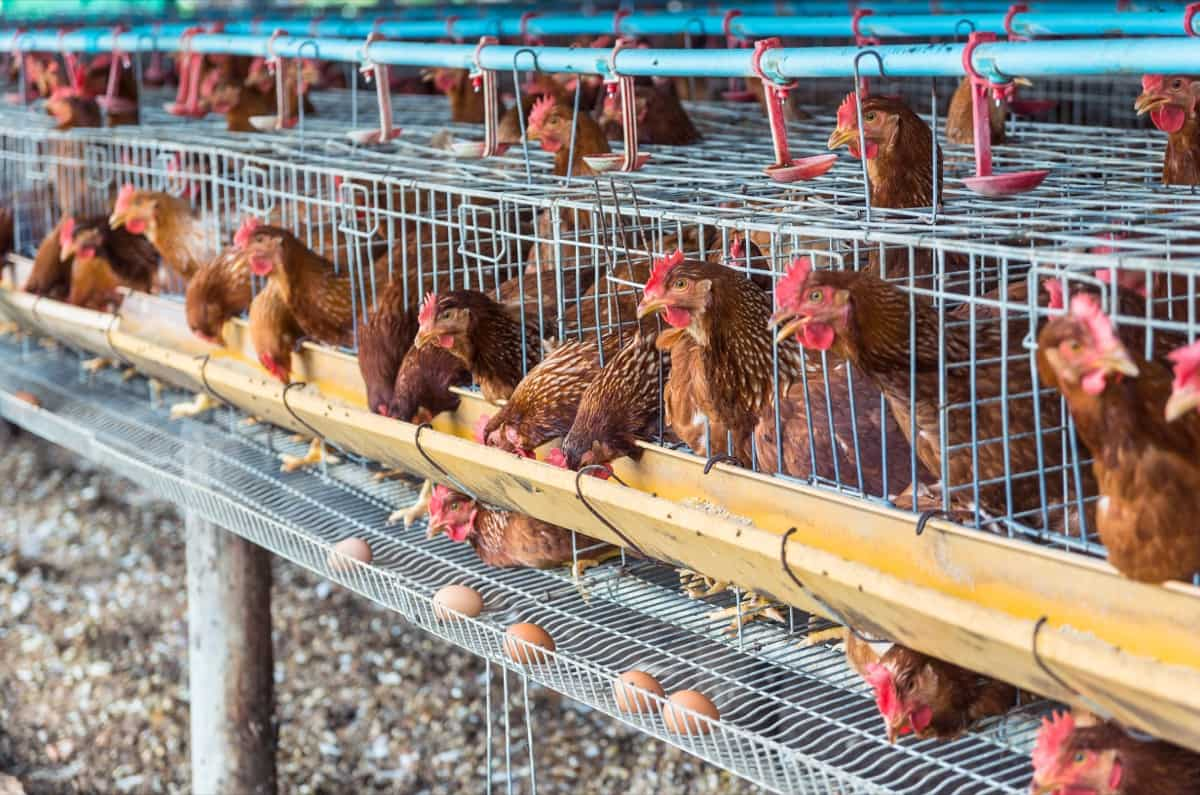
Poultry Farming Operational Strategy
- Poultry housing: Choose the right housing setup that suits your flock’s needs, considering factors like space, ventilation, and disease prevention.
- Poultry farm design: Plan your farm layout strategically to optimize workflow and maximize efficiency. Consider factors such as easy access to feed and water, waste management, and biosecurity measures.
- Civil buildings: Invest in well-designed civil buildings to provide your personnel with a comfortable and functional working environment. This can improve productivity and ensure smooth daily operations.
- Poultry rearing systems: Explore different rearing systems and choose the one that aligns with your goals and values. Options include free-range, organic, or intensive systems with advantages and considerations.
- Production overlap: Implement a schedule that ensures a consistent supply of poultry products throughout the year. This can involve staggered flock placements to maintain a steady production volume and meet market demands.
10 Strategies for Maximizing the Productivity of Chicken Farm
- Biosecurity: Implement comprehensive biosecurity measures throughout broiler production to ensure hygiene, pest control, and disease prevention within and between barns.
- Downtime between flocks: Allow a minimum of 14 days between flock placements for thorough cleaning and disinfection, reducing the risk of disease transmission and preparing for the next flock.
- Pre-placement preparation: Prioritize pre-placement tasks such as checking heaters, floor temperature, and ventilation and ensuring proper equipment like drinkers and feeders are in place to promote successful brooding and growth.
- Coccidiosis prevention: Focus on maintaining intestinal integrity through innovative technologies like the Alltech® Gut Health Management program to mitigate the impact of coccidiosis and other gut health challenges on bird performance.
- Brooding management: Pay close attention to the critical brooding phase, as it significantly affects the long-term health and performance of the birds. Emphasize intestinal growth and the development of a balanced microflora during this period.
- Litter management: Maintain optimal litter condition and quality throughout the production cycle. Proper management of litter moisture prevents wet patches that can harbor pathogens and lead to intestinal stress and disease. Additionally, ensure litter is not overly dry and dusty, which can cause respiratory issues.
- Water management: Provide abundant clean water as it is crucial for poultry health and performance. Consider factors like water quality, accessibility, cleanliness of drinker lines, and regular flushing of water lines to eliminate biofilms and mineral buildup.
- Feed management: Ensure easy access to feed and reduce wastage by setting appropriate feeder line height. Prevent “out-of-feed” events that may lead to excessive pecking at the litter. Maintain feed quality to avoid contaminants like mycotoxins.
- Stocking density: Opt for lower stocking densities to minimize stress on birds and intestinal microbiota, ultimately improving overall performance.
- Environmental management: Pay attention to temperature, relative humidity, ventilation, and lighting in the barn. Understand the interactions between these factors to optimize the barn environment.
- Monitoring during transition: Increase surveillance during critical transition periods, observing flock behavior and monitoring temperature, humidity, ventilation, and feed/water consumption for early disease detection and effective management.
- Equipment maintenance: Regularly inspect and maintain equipment to ensure proper functionality.
- Mortality checks: Promptly identify and cull diseased birds to prevent the spread of diseases within the flock.
- Flock health management: Collaborate with a veterinarian to develop a customized health program tailored to the specific needs of your flock.
In case you missed it: How to Start Free-range Chicken Farming: A Step-By-Step Guide, Advantages, and Disadvantages
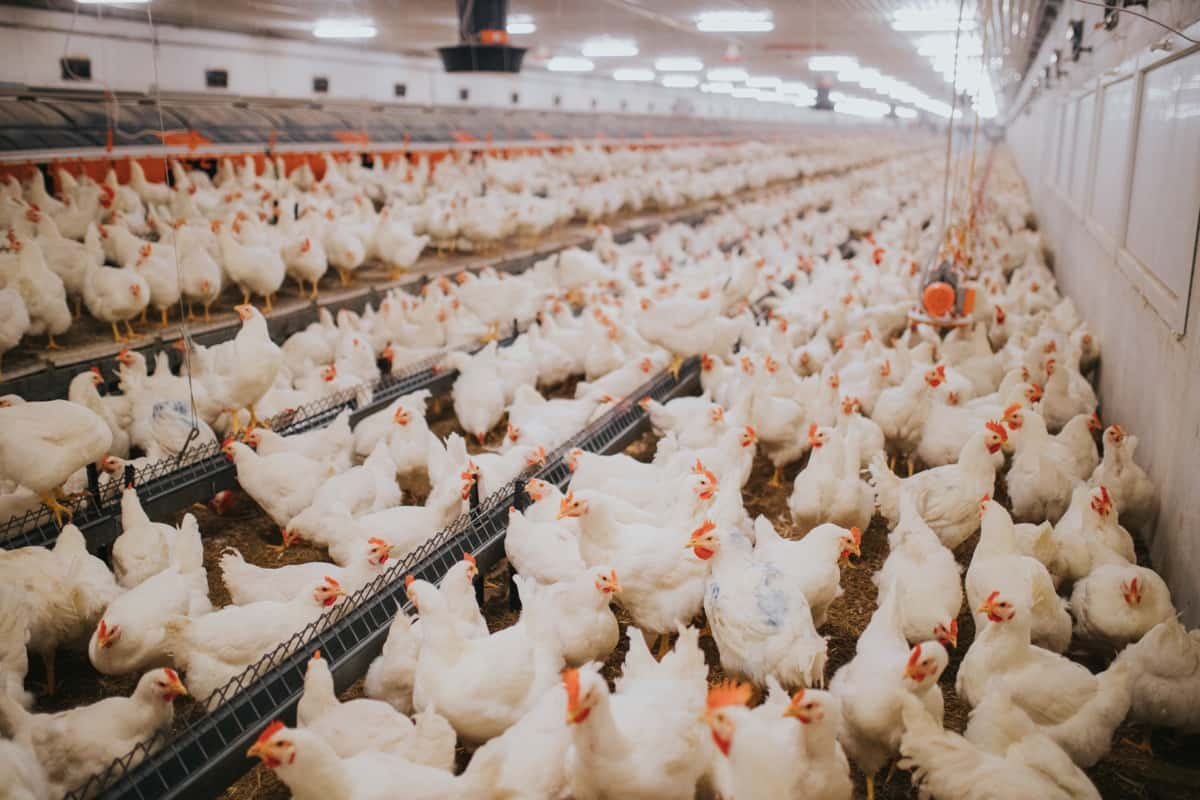
Chicken Farm Management Techniques
Chicken Farm Management Techniques involve selecting a suitable location, breeding healthy chicks, maintaining environmental hygiene, providing proper water and food, preventing and managing diseases, and using resources for Chicken farming operations.
Location and Building of Chicken Farming
- Choose a location away from the city, with good air circulation and accessibility.
- Orient the farm’s shelter east-west to minimize excessive sunlight.
- Ensure each bird has a minimum of 2 square feet of area to avoid congestion.
Choosing and Breeding Healthy Chicks
- Select breeds with high reproductive capacity and resistance to diseases.
- Consider breeds adaptable to your climate.
- Purchase chicks from reputable hatcheries.
Environmental Hygiene
- Maintain a 40-foot distance between each shelter for ventilation and reduced ammonia accumulation.
- Keep the farm premises and surroundings clean and disinfected.
- Allow a break of 10-15 days between batches for location and equipment sterilization.
- Implement a visitor protocol to prevent disease transmission.
Water and Food
- Provide age-specific, balanced, and high-quality feed.
- Consider the nutritional requirements of layers and broilers separately.
- The feed includes grains, cereals, oilseeds, protein, and vitamin supplements.
- Ensure regular supply of clean water and periodic disinfection of pipelines.
Preventing and Managing Poultry Diseases
- Vaccinate birds to prevent illnesses.
- Regularly inspect birds for external parasites and use appropriate treatments.
- Monitor flock health and promptly treat any signs of illness.
- Isolate sick birds until they have fully recovered.
- Separate flocks of different ages to prevent disease transmission.
In case you missed it: Earning More than 3 Lakh Per Month: A Success Story of Kadaknath Chicken Farmer
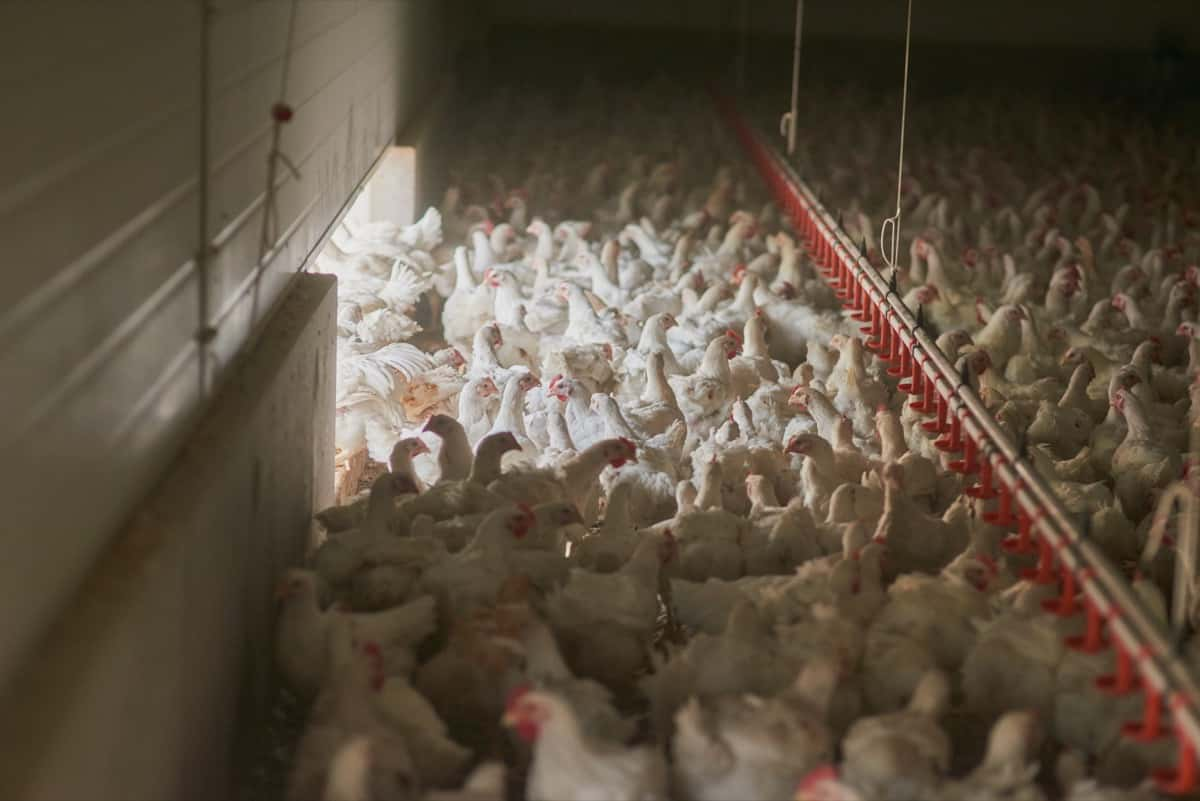
Maximizing Efficiency and Optimizing Chicken Farm Operations
- Farm Layout and infrastructure: Designing the layout of your farm to ensure proper placement of poultry houses, feed storage areas, and equipment, allowing for easy access and efficient workflow.
- Feeding and nutrition: Implementing a well-balanced and nutritionally optimized diet for chickens, considering their growth stage and nutritional requirements. This involves sourcing quality feed ingredients, formulating diets, and ensuring proper feeding practices.
- Disease prevention and biosecurity: Implementing strict biosecurity measures to prevent disease entry, introduction, and spread. This includes controlling visitor access, maintaining hygiene protocols, vaccination programs, and regular health monitoring.
- Genetic selection: Choosing the right breed or genetic line of chickens that exhibit desired traits, such as growth rate, feed efficiency, disease resistance, and egg production, to maximize productivity and profitability.
- Waste management: Implementing effective waste management systems to handle and dispose of manure and other farm waste properly, reducing environmental impact and maintaining a clean and healthy farm environment.
- Data monitoring and analysis: Utilizing modern technologies such as sensors, automated systems, and data analytics to monitor key parameters like feed consumption, water usage, growth rates, and production performance. This data can be interpreted to identify areas for improvement and make data-driven decisions.
- Staff training and management: Providing proper training and education to farm staff on best practices for chicken farm management, including animal welfare, disease recognition, and treatment protocols, ensuring a skilled and motivated workforce.
- Financial planning and analysis: Developing sound financial plans, monitoring production costs, analyzing performance metrics, and identifying opportunities for cost reduction and increased profitability.
Transforming a Chicken Farm: A Success Story in Maximizing Efficiency
In a small village in rural India, a chicken farmer named Rajesh faced challenges with low productivity and rising costs. Determined to improve, Rajesh embarked on a journey to maximize efficiency on his farm. He redesigned the layout and infrastructure, streamlining the workflow and enhancing accessibility.
Rajesh formulated a balanced diet tailored to his chickens’ specific nutritional needs by seeking guidance from poultry nutrition experts, leading to improved health and productivity. Biosecurity measures, such as strict protocols, hygiene practices, and vaccinations, were implemented to reduce disease incidents and promote healthier chickens.
Rajesh invested in modern technologies like automated climate control systems and sensors to optimize environmental conditions in the poultry houses, ensuring the comfort and well-being of his flock. Embracing data-driven decision-making, he implemented a comprehensive monitoring system to track key performance indicators and identify areas for improvement. Through continuous learning and improvement, Rajesh transformed his struggling farm into a thriving and profitable enterprise, inspiring other farmers to optimize their operations.
In case you missed it: How this Farmer Made 24 Lakh Profit from Country Chicken Farming – A Success Story
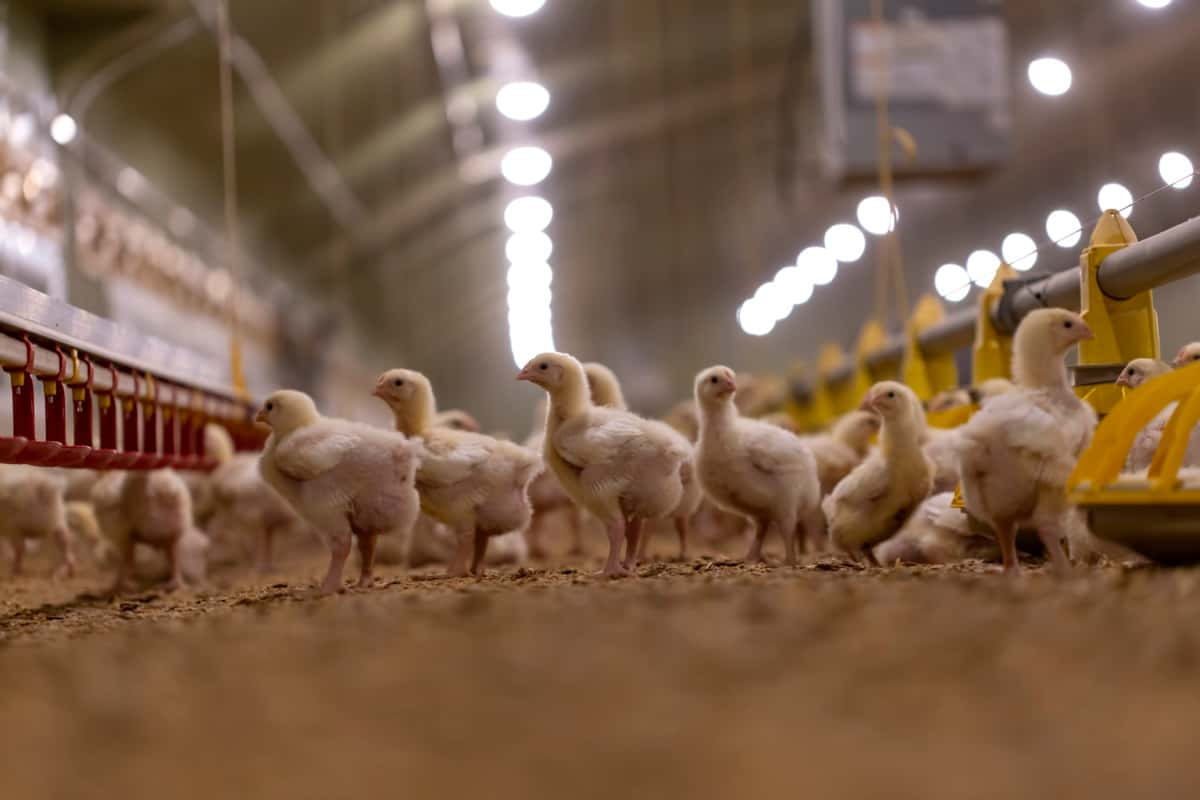
Conclusion
By implementing strategic changes in farm layout, nutrition, biosecurity, technology, and data monitoring, chicken farmers can maximize efficiency and achieve improved productivity, profitability, and sustainability in their operations. Optimizing chicken farm operations is key to long-term success in the poultry industry.
- Types of Pesticides Used in Agriculture: A Beginner’s Guide
- Economical Aquaculture: A Guide to Low-Budget Fish Farming
- 15 Common Planting Errors That Can Doom Your Fruit Trees
- How to Make Houseplants Bushy: Effective Tips and Ideas
- Innovative Strategies for Boosting Coconut Pollination and Yield
- Pollination Strategies for Maximum Pumpkin Yield
- The Complete Guide to Chicken Fattening: Strategies for Maximum Growth
- Natural Solutions for Tulip Problems: 100% Effective Remedies for Leaf and Bulb-Related Issues
- Revolutionizing Citrus Preservation: Towards a Healthier, Greener Future
- Natural Solutions for Peony Leaf and Flower Problems: 100% Effective Remedies
- Maximizing Profits with Avocado Contract Farming in India: A Comprehensive Guide
- Natural Solutions for Hydrangea Problems: 100% Effective Remedies for Leaf and Flowers
- The Ultimate Guide to Choosing the Perfect Foliage Friend: Bringing Life Indoors
- From Sunlight to Sustainability: 15 Ways to Use Solar Technology in Agriculture
- The Ultimate Guide to Dong Tao Chicken: Exploring from History to Raising
- The Eco-Friendly Makeover: How to Convert Your Unused Swimming Pool into a Fish Pond
- Mastering the Art of Delaware Chicken Farming: Essentials for Healthy Backyard Flocks
- 20 Best Homemade Fertilizers for Money Plant: DIY Recipes and Application Methods
- How to Craft a Comprehensive Free-Range Chicken Farming Business Plan
- Brighten Your Flock: Raising Easter Egger Chickens for Beauty and Bounty
- How to Optimize Your Poultry Egg Farm Business Plan with These Strategies
- Subsidy for Spirulina Cultivation: How Indian Government Schemes Encouraging Spirulina Farmers
- Ultimate Guide to Raising Dominique Chickens: Breeding, Feeding, Egg-Production, and Care
- Mastering the Art of Raising Jersey Giant Chickens: Care, Feeding, and More
- Ultimate Guide to Raising Legbar Chickens: Breeding, Farming Practices, Diet, Egg-Production
- How to Raise Welsummer Chickens: A Comprehensive Guide for Beginners
- How to Protect Indoor Plants in Winter: A Comprehensive Guide
- Ultimate Guide to Grow Bag Gardening: Tips, Tricks, and Planting Ideas for Urban Gardeners
- Guide to Lotus Cultivation: How to Propagate, Plant, Grow, Care, Cost, and Profit
- Agriculture Drone Subsidy Scheme: Government Kisan Subsidy, License, and How to Apply Online
- Ultimate Guide to Raising Araucana Chickens: Breed Profile, Farming Economics, Diet, and Care
- Bringing Hydroponics to Classroom: Importance, Benefits of Learning for School Students
- Ultimate Guide to Raising Polish Chickens: Breed Profile, Farming Economics, Diet, and Care
- Ultimate Guide to Raising Australorp Chickens: Profile, Farming Economics, Egg Production, Diet, and Care
- Silkie Chicken Farming: Raising Practices, Varieties, Egg Production, Diet, and Care
- Sussex Chicken Farming: Raising Practices, Varieties, Egg Production, Diet and Care